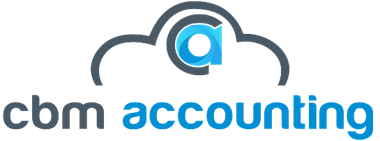For bills generated on or after March 1, 2021, a new domestic reverse charge will be implemented in the UK for the construction industry. This was previously scheduled for October 1, 2019, and October 1, 2020.
To combat corruption in the construction industry, the reverse charge was implemented.
Table of Contents
When does the reversal of the fee take place?
How is reverse charge and how does it work?
What will I have to perform as the supplier of the supply?
The VAT return is being prepared:
Getting the VAT return prepared:
Additional things to consider:
Alternatively, you can reach out to us for additional information on any of our services:
When does the reversal of the fee take place?
This will apply to supplies between construction service companies that are both contractors.
- They must be CIS-registered and report payments through the CIS (Construction Industry Scheme).
- The delivery of services is subject to VAT at the normal or reduced rate if the business is VAT registered.
Only ‘specified supplies’ conducted between VAT-registered firms are subject to the reverse charge. If your invoice contains both CIS and non-CIS supplies, the reverse charge will apply to the whole supply.
When billing the “end-user,” it will not apply (see below).
How is reverse charge and how does it work?
Subcontractors and contractors that provide building services usually charge VAT, and it is included in their invoice to the consumer. The VAT levied on the production is subsequently recorded and paid to HMRC through the VAT return.
Instead, when these regulations apply, the subcontractor or contractor shall inform the client that the delivery is subject to the reverse charge, and the consumer should account for the output VAT conversely.
- This means that the client must account for both the output tax (in box 1 of the VAT return) and the input tax (in box 2 of the VAT return) (in box 4 of the VAT return).
- This may provide a cash flow gain to the customer receiving the supply since the amount owed to the contractor/supplier will be lower
- Providing that the contractor’s payment due date falls before the VAT due date.
If you are offering construction services to a client who is not VAT or CIS registered, you should charge VAT as usual rather than using the reverse charge guidelines described above.
End consumers are people who own property and receive building and construction services but do not provide such services in conjunction with other services, such as a property owner or a developer. The reverse charge does not extend to supplies to end-users who inform their supplier or construction contractor that they are end-user in advance. The end-user will be liable for accounting for the reverse charge even if it does not present evidence of its end-user status to its supplier.
What will I have to perform as the supplier of the supply?
Constructing an invoice:
All of the statutory information that is typically necessary for a VAT invoice should be included in the invoice you submit. You should additionally include on the invoice that the residential reverse charge is in effect and that the client is responsible for VAT.
The amount of VAT due should be indicated on the invoice, but it should not be incorporated under the heading “VAT charged” or even within the amount owed to you as the supplier.
The VAT return is being prepared:
You should not put anything in box 1 of the VAT return as the provider providing the supply, but you must record the net sale in box 6.
If you are using an accounting system, be sure you are using the right tax code so the process moves into the right boxes.
As the client receiving the supply, what do I need to do?
Getting the VAT return prepared:
You should account for the output VAT in box 1 of the VAT return as the customer receiving the supply, but nothing should be reported in box 6. In addition, you should declare the input VAT as usual in box 4 of the VAT return, and the net purchase figure in box 7.
Unless you are using an accounting system, be sure you are using the appropriate tax code so the transaction takes place in the right boxes.
Additional things to consider:
We anticipate a gradual increase in fines for non-compliance from HMRC. HMRC may require the customer to pay the additional VAT if the reverse charge is not applied when it should be (i.e. the supplier charges VAT to its customer erroneously), even if the additional VAT has already been paid to the supplier and the supplier has accounted for and paid it to HMRC!
Alternatively, you can reach out to us for additional information on any of our services:
Contact our tax specialists if you have any more thoughts or would want to learn more about the reverse charge. Keep in touch with us. Further, CBM Accounting also offers a wide range of services to our customers. Our tax professionals can help you have a fuller knowledge of the tax services, financial planning, and management system.

